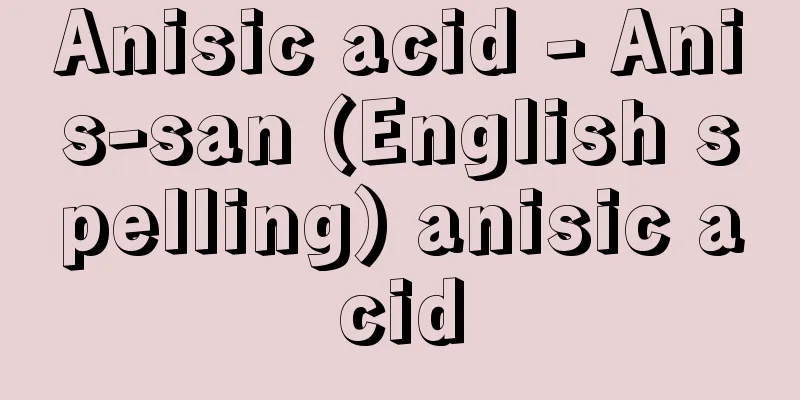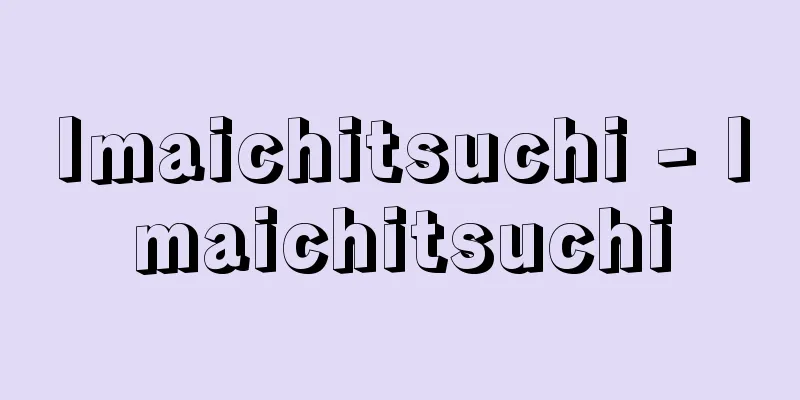Editorial - Shasetsu (English spelling) editorial

|
These are opinions and assertions that newspapers and publishers publish in their newspapers (magazines) to discuss and explain the pros and cons of current political, economic, and social issues that arise daily both domestically and internationally. Editorials in Japanese newspapers today are generally anonymous, with the company responsible for them. In the early days of newspapers, they published "editorials" that discussed current issues or contributions from prominent scholars, politicians, and knowledgeable people, to educate the public. In the early days, Western newspapers and publications also used letters to the editor (letters), but from the early 19th century, publishers and editors began to write and publish their own editorials, gradually leading to the modern-day editorial format. Editorials first appeared in Japanese newspapers in 1874 (Meiji 7), when so-called political newspapers such as Nisshin Shinjishi, Choya Shinbun, and Tokyo Nichi Nichi Shinbun established permanent editorial columns with well-known commentators writing for them, and the influence of editorials became recognized. From the Meiji to Taisho eras, editorials played a major role in the cause of freedom and civil rights, the opening of the National Diet, treaty revision, the defense of constitutional government, and the universal suffrage movement. After World War II, as newspapers and various other mass media developed and spread, their information transmission function improved, and the public became more informed and knowledgeable, editorials with the authoritative authority of the author gradually shifted to anonymous editorials. Today's editorials, from the perspective of the newspaper as a representative of the people, discuss and criticize the pros and cons of current affairs that arise daily, and they also play a stronger role in explaining the issues and helping the public understand them. This is because many of today's newspapers aim to report objectively and have a corporate philosophy of being politically neutral, fair, and unbiased. However, these changes in editorials have led to growing criticism that "the critical spirit is weak and the arguments are no longer attractive," "the target audience of the editorial is not clear," "the structure is difficult to understand and the arguments are vague," "they use abstract language and lack concreteness," and fewer people are reading editorials. In this sense, editorials do not necessarily have a high social influence, but they remain an important element of newspapers, as they allow readers to understand the stance of each newspaper on various topics. In the United States, broadcasting stations also broadcast editorials, but in Japan, editorial broadcasting is not permitted on radio or television due to the principle of "broadcasting neutrality." [Masao Takasu and Takashi Ito] [Reference] |Source: Shogakukan Encyclopedia Nipponica About Encyclopedia Nipponica Information | Legend |
|
国内・国外で日々生起する政治、経済、社会などの時事問題について、新聞社、出版社が、社の責任において、その理非を論じたり、説明したりするために紙(誌)上に掲げる意見、主張のこと。現在の日本の新聞の社説は一般に匿名であり、社が責任を負う形になっている。新聞が発生した初期のころは、時事問題を論じた投書または著名な学者、政治家、有識者の寄稿を「論説」として掲載して、民衆の啓蒙(けいもう)にあたっていた。欧米の新聞、出版物でも、初期のころは投書(レター)の形式をとっていたが、19世紀初期から、発行者、編集者が自ら論説を執筆、掲載するようになり、しだいに現在の社説の形になってきた。 日本の新聞に社説が登場したのは1874年(明治7)からで、『日新真事誌』『朝野(ちょうや)新聞』『東京日日新聞』などの、いわゆる政論新聞が社説欄を常設、著名な論客が執筆するようになり、社説の影響力が認識されるようになった。明治から大正にかけ、自由民権、国会開設、条約改正、憲政擁護、普通選挙運動などに社説が果たした役割は大きかった。第二次世界大戦後、新聞をはじめ各種のマス・メディアが発達・普及し、情報伝達機能が高まるとともに、民衆の情報・知識が豊富になるにつれ、筆者の権威による論説から、しだいに匿名の社説に変化してきた。 現在の社説は、日々生起する時事問題に、民衆の代表としての新聞の立場から、ことの理非を論じ、批判するとともに、その問題に対する民衆の理解を助ける解説的役割を果たすという性格が強くなっている。これは、現在の新聞が客観報道を旨とし、政治的には中立・公正、不偏不党を社是とするものが多くなったからである。しかし、こうした社説の変化に対し、「批判的精神が貧弱で、主張に魅力がなくなった」「社説の呼びかける対象がはっきりしない」「構成がわかりにくく、論旨があいまいである」「抽象語が多く、具体性に欠ける」などの批判が高まっており、社説を読む人が少なくなっている。この意味で社説がもつ社会的影響力はかならずしも高いとはいえないが、社説を通して各紙のさまざまなトピックに対する姿勢を理解できることから、新聞の重要な要素であることにはかわりない。 なお、アメリカでは、放送の分野でも放送局が社説放送editorial broadcastingを行っているが、日本のラジオ、テレビでは「放送の中立性」というたてまえから、社説放送は認められていない。 [高須正郎・伊藤高史] [参照項目] |出典 小学館 日本大百科全書(ニッポニカ)日本大百科全書(ニッポニカ)について 情報 | 凡例 |
<<: Shāhsevān (English spelling)
Recommend
Naucratis - Naucratis (English spelling)
A Greek trading city located on the Nile River Ca...
Avogadro's Number - Avogadro's Number
The number of molecules contained in 1 mole of a p...
Epimedium - Ikarisou
A perennial herb of the Berberidaceae family (APG...
Kamoto [town] - Kamo
An old town in Kamoto County, in the northern part...
Ramses [II] - Ramses
The third king of the 19th Dynasty of ancient Egyp...
Moltmann, Jürgen
Born: April 8, 1926. German theologian. Pastor of ...
Zantedeschia elliottiana (English spelling) Zantedeschiaelliottiana
… [Takabayashi Masatoshi]. … *Some of the termino...
Brain-storming
… [Intuitive method] This method makes use of hum...
Takatori ware
A representative early modern pottery kiln in Fuk...
Eyre, Edward John
Born: August 5, 1815, Hornsea, Yorkshire [Died] No...
General Free Person
...In the 19th century, this idea was combined wi...
Dyspnea at rest - Dyspnea at rest
In addition, various other mechanisms have been p...
Standard deviation
Standard deviation can be used in two ways: with ...
Gyeongbu Railroad - Kyǒng-Bu ch'ǒlto
A railway built between Gyeongseong (now Seoul) an...
Xu Xing (English)
One of the Hundred Schools of Thought in the Warri...









